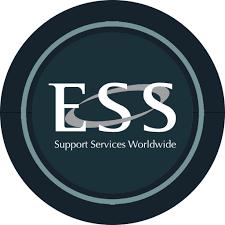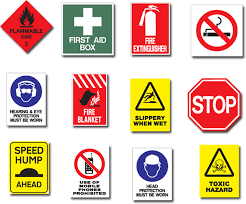ESS: Empowering Success and Satisfaction
In today’s fast-paced and competitive world, individuals and organizations alike are constantly seeking ways to enhance their performance, productivity, and overall satisfaction. One powerful tool that has gained significant attention in recent years is ESS – Employee Self-Service.
ESS refers to a digital platform or software that allows employees to manage various aspects of their work life independently. It empowers individuals by providing them with easy access to information, tools, and resources necessary for their professional growth and success.
One of the key benefits of ESS is the ability for employees to have control over their personal information. Through a secure login, they can update their contact details, address, emergency contacts, and even banking information. This eliminates the need for manual paperwork or relying on HR departments for such updates. Employees can conveniently make these changes themselves, ensuring accuracy and timeliness.
ESS also streamlines administrative tasks by digitizing processes such as leave management, attendance tracking, and expense reimbursement. With just a few clicks, employees can submit leave requests, view their attendance records, or even track the status of their expense claims. This not only saves time but also reduces the burden on HR personnel who no longer need to manually handle these tasks.
Furthermore, ESS promotes transparency within an organization. Employees can access important company policies, procedures, and documents such as employee handbooks or organizational charts. This ensures that everyone is on the same page regarding expectations and guidelines.
Another noteworthy advantage of ESS is its ability to foster communication and collaboration among employees. Many ESS platforms offer features like internal messaging systems or discussion forums where employees can interact with one another or seek guidance from subject matter experts within the organization. This enhances knowledge sharing and encourages a sense of community among colleagues.
From an organizational perspective, implementing ESS can lead to significant cost savings. By automating various administrative processes previously handled manually by HR personnel, companies can reduce overhead costs and allocate resources more efficiently. Moreover, ESS enables HR teams to focus on strategic initiatives such as talent development or employee engagement, rather than being occupied with routine administrative tasks.
In conclusion, ESS is a game-changer in today’s digital era. It empowers employees by giving them control over their personal information and streamlining administrative tasks. It fosters transparency, communication, and collaboration within organizations while also providing cost savings and allowing HR teams to focus on more strategic initiatives.
As businesses continue to evolve and adapt to the ever-changing landscape, embracing ESS can be a key differentiator in attracting and retaining top talent. By investing in technologies that empower employees and enhance their overall satisfaction, organizations can pave the way for success in today’s competitive world.
Frequently Asked Questions About Essays: A Comprehensive Guide
- What is an essay?
- How do I write an essay?
- What are the different types of essays?
- How long should an essay be?
- What are the basic elements of an essay?
- How do I structure my essay?
What is an essay?
An essay is a written piece of work that presents a focused argument or analysis on a particular topic. It is a common form of academic writing that allows individuals to express their thoughts, ideas, and opinions in a structured and coherent manner.
Essays typically consist of an introduction, body paragraphs, and a conclusion. The introduction provides background information on the topic and presents the thesis statement, which states the main argument or purpose of the essay. The body paragraphs elaborate on the thesis statement by presenting supporting evidence, examples, and analysis. Each paragraph focuses on a specific point related to the overall argument. Finally, the conclusion summarizes the main points discussed in the essay and restates the thesis statement in a concise manner.
Essays can take various forms depending on their purpose and intended audience. Some common types of essays include:
- Persuasive Essays: These essays aim to convince readers to adopt a specific viewpoint or take action on a particular issue.
- Descriptive Essays: These essays vividly describe a person, place, object, or event using sensory details.
- Narrative Essays: These essays tell a story or recount personal experiences in an engaging and chronological manner.
- Expository Essays: These essays provide factual information and explain concepts or ideas in a clear and concise manner.
- Argumentative Essays: These essays present arguments supported by evidence to persuade readers to agree with a specific position.
Essays are not limited to academic settings; they are also commonly used in professional contexts for various purposes such as reports, articles, or opinion pieces.
Overall, an essay is an effective way for individuals to convey their thoughts and arguments on a given topic while adhering to proper structure and organization.
How do I write an essay?
Writing an essay can be a rewarding and fulfilling process. Here are some steps to help you get started:
- Understand the Assignment: Read and analyze the essay prompt or assignment carefully. Make sure you fully understand what is being asked of you, including the topic, length, formatting requirements, and any specific guidelines.
- Plan Your Essay: Before diving into writing, it’s helpful to create a plan or outline for your essay. This will provide structure and organization to your thoughts. Decide on the main points or arguments you want to make and determine the order in which you will present them.
- Conduct Research (if necessary): Depending on the topic, you may need to conduct research to gather information and support your arguments. Utilize credible sources such as books, scholarly articles, reputable websites, or interviews with experts.
- Develop a Thesis Statement: Your thesis statement is a concise summary of your main argument or point of view on the topic. It should be clear and specific, providing a roadmap for your essay.
- Write an Introduction: Start your essay with an engaging introduction that grabs the reader’s attention and provides context for your topic. Introduce your thesis statement towards the end of the introduction.
- Write Body Paragraphs: Each body paragraph should focus on a single main idea or argument that supports your thesis statement. Begin each paragraph with a topic sentence that introduces the main point and provide supporting evidence or examples to strengthen your argument.
- Use Proper Evidence and Examples: Back up your claims with relevant evidence from credible sources or personal experiences. This adds credibility to your essay and strengthens your arguments.
- Address Counterarguments (if applicable): Acknowledge opposing viewpoints or counterarguments in order to demonstrate that you have considered different perspectives on the topic. Refute those counterarguments with logical reasoning and evidence.
- Write a Conclusion: Summarize your main points and restate your thesis statement in a concise manner. Avoid introducing new information in the conclusion. Instead, leave the reader with a thought-provoking statement or a call to action related to your topic.
- Revise and Edit: Once you have completed your first draft, take time to revise and edit your essay. Check for clarity, coherence, grammar, punctuation, and overall flow of ideas. Consider seeking feedback from peers or mentors to gain different perspectives on your work.
- Proofread: Before submitting your essay, carefully proofread it for any spelling or grammatical errors. Pay attention to formatting requirements as well.
Remember that writing is a process that requires practice and refinement. Give yourself enough time to brainstorm ideas, research (if necessary), write multiple drafts, and revise thoroughly. With patience and dedication, you can craft a well-structured and compelling essay.
What are the different types of essays?
There are several different types of essays, each with its own unique purpose and structure. Here are some common types of essays:
- Narrative Essay: This type of essay tells a story or recounts a personal experience. It often includes vivid descriptions, sensory details, and a clear chronological order.
- Descriptive Essay: In a descriptive essay, the writer paints a picture with words by providing detailed descriptions of people, places, objects, or events. The goal is to create a vivid impression in the reader’s mind.
- Expository Essay: An expository essay presents information, explains an idea, or provides instructions on how to do something. It is based on facts and evidence and does not involve personal opinions.
- Persuasive Essay: The purpose of a persuasive essay is to convince the reader to adopt a particular viewpoint or take a specific action. It presents arguments supported by evidence and logical reasoning.
- Argumentative Essay: Similar to a persuasive essay, an argumentative essay aims to persuade the reader but relies more heavily on presenting opposing viewpoints and counterarguments before refuting them.
- Compare and Contrast Essay: This type of essay examines the similarities and differences between two or more subjects or ideas. It highlights both the shared aspects and the distinctive features of each subject.
- Cause and Effect Essay: A cause and effect essay explores the relationship between events or situations where one event (the cause) leads to another event (the effect). It analyzes why something happens and its consequences.
- Process Essay: A process essay explains how something is done or how it works by providing step-by-step instructions or explanations. It focuses on clarifying procedures in a logical sequence.
- Argumentative Research Essay: In an argumentative research essay, the writer conducts extensive research on a specific topic, presents various perspectives, analyzes evidence, and forms an argument based on their findings.
- Analytical Essay: An analytical essay examines a piece of literature, artwork, or concept and breaks it down into its constituent parts to analyze and evaluate its significance or effectiveness.
These are just a few examples of the many types of essays that exist. Each type serves a different purpose and requires a specific approach to writing.
How long should an essay be?
The length of an essay can vary depending on the specific requirements or guidelines provided. In academic settings, essays are often assigned with a recommended word count or page limit. However, if there are no specific instructions, the length of an essay is generally determined by its content and purpose.
For most standard essays, such as those written for school assignments or college applications, a typical length is usually between 500 to 1500 words. This range allows for a sufficient exploration of the topic while maintaining clarity and conciseness.
It’s important to note that the quality and depth of the content matter more than the length itself. A well-structured and well-supported essay that effectively communicates its main points is more valuable than a lengthy piece filled with unnecessary information or repetition.
In some cases, longer essays may be required for more extensive research papers or dissertations in higher education. These types of essays often have specific formatting guidelines and may require in-depth analysis or multiple sections to address different aspects of the topic.
Ultimately, it’s essential to consider the purpose, audience, and guidelines provided when determining the appropriate length for an essay. Adhering to any specified word count or page limit is crucial, but always prioritize delivering clear, concise, and well-developed content over simply reaching a certain length.
What are the basic elements of an essay?
An essay typically consists of several basic elements that help structure and convey the writer’s ideas effectively. These elements include:
- Introduction: The introduction serves as the opening of the essay and provides background information on the topic. It includes a thesis statement, which presents the main argument or purpose of the essay.
- Body paragraphs: The body paragraphs make up the main content of the essay and support the thesis statement with evidence, examples, and analysis. Each paragraph focuses on a specific point or idea related to the topic.
- Topic sentences: Each body paragraph starts with a topic sentence that introduces the main idea or argument of that particular paragraph. It acts as a roadmap for the reader, guiding them through the essay’s structure.
- Supporting evidence: Within each body paragraph, supporting evidence is provided to strengthen and validate the writer’s claims or arguments. This evidence can include facts, statistics, examples, quotations, or expert opinions.
- Analysis and interpretation: After presenting supporting evidence, it is crucial to analyze and interpret it in relation to the main argument. This demonstrates critical thinking skills and shows how the evidence supports or relates to the thesis statement.
- Transitions: Transitions are essential in connecting different ideas and paragraphs within an essay smoothly. They help create coherence and flow by signaling shifts in topic or introducing new points.
- Counterarguments and refutation (optional): Depending on the type of essay, it may be necessary to address counterarguments or opposing viewpoints. This allows for a more comprehensive discussion of the topic while strengthening one’s own argument by refuting opposing claims.
- Conclusion: The conclusion summarizes the main points discussed in the essay and restates the thesis statement in a concise manner. It may also offer final thoughts, implications, or suggestions for further exploration related to the topic.
- Citations (if applicable): If external sources are used in an essay, proper citations must be included to give credit to the original authors and avoid plagiarism. The specific citation style (e.g., APA, MLA) should be followed according to the guidelines provided.
These elements provide a basic structure for organizing and presenting ideas in an essay. However, it’s important to note that essay formats can vary based on the purpose, audience, and specific requirements of the assignment or academic discipline.
How do I structure my essay?
Structuring an essay is crucial for presenting your ideas in a logical and coherent manner. While there are various ways to structure an essay, the following outline provides a general framework that can be adapted to suit your specific topic and requirements:
Introduction:
– Start with a compelling opening sentence or hook to grab the reader’s attention.
– Provide background information on the topic and its significance.
– State your thesis statement, which is the main argument or point you will discuss in the essay.
Body paragraphs:
– Each body paragraph should focus on one main idea or supporting point related to your thesis statement.
– Start each paragraph with a topic sentence that introduces the main idea of that paragraph.
– Provide evidence, examples, or data to support your main idea.
– Analyze and explain how the evidence supports your thesis statement.
– Use transitional words or phrases to ensure smooth flow between paragraphs.
Counterarguments (if applicable):
– Address any opposing viewpoints or counterarguments related to your thesis statement.
– Present these counterarguments objectively and provide evidence or reasoning to refute them.
– This demonstrates that you have considered different perspectives and strengthens your own argument.
Conclusion:
– Summarize the main points discussed in the body paragraphs, emphasizing their relevance to the thesis statement.
– Restate the thesis statement in a slightly different way, reinforcing its importance.
– Provide a concluding thought or insight that leaves a lasting impression on the reader.
References (if applicable):
– If you have used external sources, include a reference list at the end of your essay following the appropriate citation style (e.g., APA, MLA).
Remember these additional tips for effective essay writing:
– Use clear and concise language, avoiding jargon or overly complex sentences.
– Ensure smooth transitions between paragraphs by using transitional words/phrases.
– Support your arguments with credible sources, such as academic articles or reputable websites.
– Revise and edit your essay for clarity, coherence, grammar, and spelling errors.
– Pay attention to the formatting guidelines provided by your instructor or institution.
By following this general essay structure and incorporating these tips, you can create a well-organized and persuasive essay that effectively communicates your ideas to the reader.




